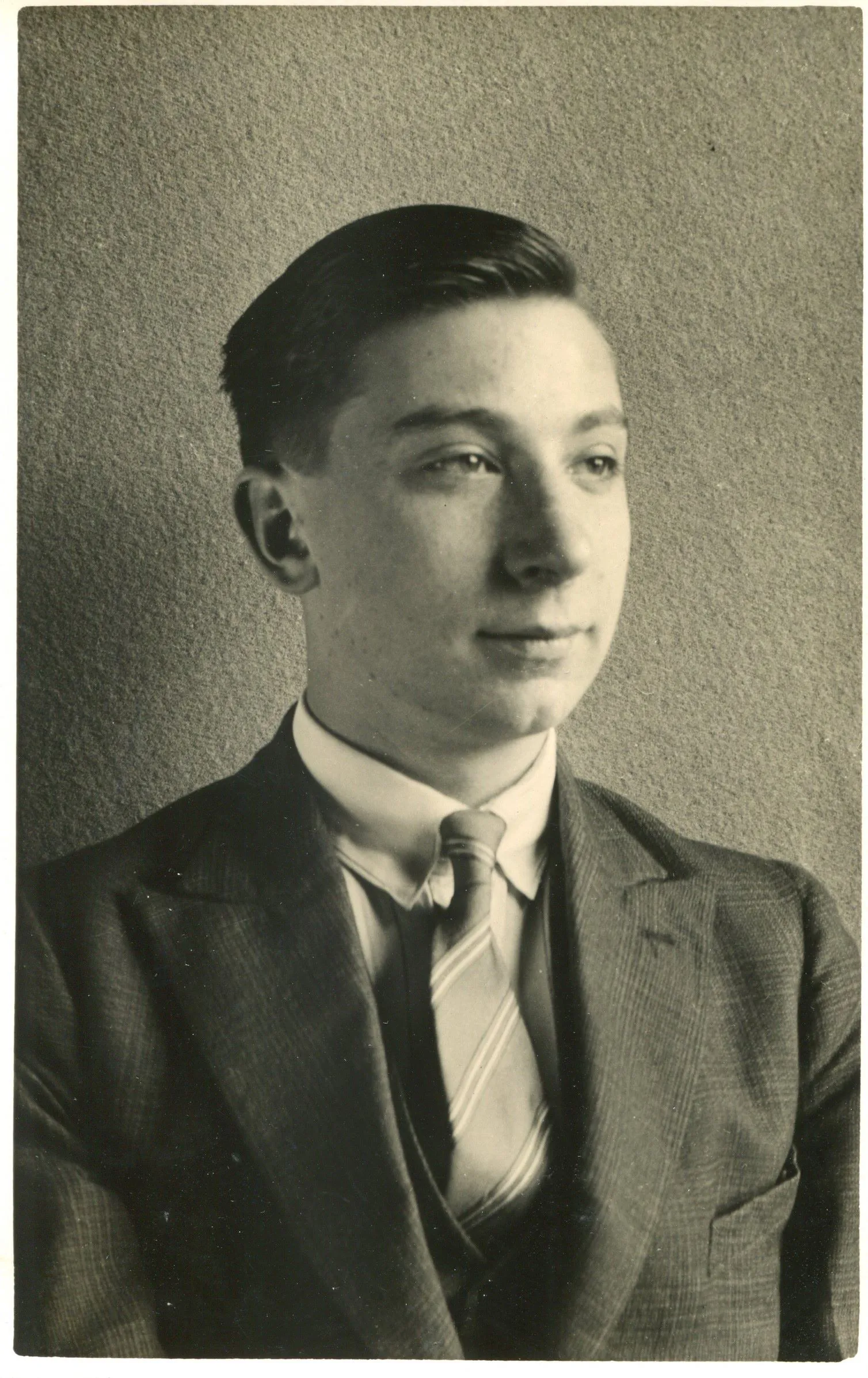Ronald Hugh Barker 1915 - 2015
Biographical Information on Ronald Hugh Barker (Roy), a pioneer in digital technology and IET Member for 70 years.
Dr Ronald Hugh Barker BSc, PhD, FIET, FInstP, FIMechE, CEng
Ronald Hugh Barker was an Irish physicist and mathematician born in Dublin to English parents. Despite his early life and education being disrupted by his father’s frequent moves to find work he excelled at school winning the Allen prize as the best pupil in mathematics and science at the Cedars School, Leighton Buzzard.
After his father died, he was brought up and later supported financially by his aunt whilst at the University of Hull gaining a first-class honours degree awarded by the University of London in 1938. Roy, as he was well known, was awarded a PhD for his thesis on Digital Servo Systems in 1954.
Roy was a very modest man who rarely spoke about the technical and secret work he was undertaking. The information in this biography has largely been compiled from the discovery of his own copies of research papers, the IET Archives and MRATHS archives (Malvern Radar Technology and History Society).
He started his secretive career at Standard Telephones and Cables (STC), Woolwich, researching special purpose X-Ray tubes. When WWII started, he had a reserved occupation as a scientist. In March 1941 he was appointed as a Temporary Experimental Officer at the Signals Experimental Establishment (SEE) on Woolwich Common.

The establishment soon moved to Christchurch to become the Signals Research and Development Establishment (SRDE) for the Ministry of Supply.
Between 1941-1945 Roy oversaw a programme on the use of frequency modulation for army communications. At the Signals Research and Development Establishment (SRDE) he quickly rose in rank and because of his expertise in telemetry reported on the design of the V2 rocket. In 1944 the Americans set up the Bumblebee programme to advance missile technology. It was code named Bumblebee, tasked to quickly develop a guided, jet-propelled, anti-aircraft missile. Due to its complexity, it was realised that collaboration was not only necessary but essential. In 1946 Roy was invited to attend the first International Telemetering Symposium at Princeton University to pool knowledge. At SRDE he went on to devise, develop and see into production the first system of telemetry for guided weapons in Britain.
His interest was also in telecommunications and much of his pioneering research work was to do with early digital technology, speech encryption, pulse code and high-speed frequency modulation, servo systems, transmission of high-speed data over telephone wires and transistors for digital computing. In 1948 Roy proposed one of the earliest air traffic control systems based on digital technology.
In 1953 he won the IET Heaviside award for his work on Z transforms for the formulation procedure and computation of the first tables of these transforms ever to be published. This work provided the foundation for the theoretical analysis of linear sampled-data systems essential to signal processing in digital transmission.
At this time there were problems with digital data transmissions becoming unreadable due to noise. He made a breakthrough with his invention of Barker Sequences, now known as Barker code, published in 1953. The codes are commonly used in many applications, for example in: - radar and ultrasound, DSSS broadband, GPS, bar codes and tracking technology, satellite communications, vehicle guidance systems and near space telemetry. He gained several patents for work done during this period one of which describes the invention of the first British optical encoder which he later successfully demonstrated. The optical encoder is a transducer commonly used for measuring linear or rotational motion, essential to control servo motors.
In 1959 his career changed from research to administrative. Roy was enticed into the private sector to become the director of Central Electricity Research Laboratories in Leatherhead (CERL) and after as technical director of RB Pullin & Co, an innovative manufacturer of electrical and scientific instruments.
His final move was back to The Ministry of Supply as a Director in charge of the Royal Armament Research Establishment, (RARDE) at Fort Halstead, Sevenoaks.
During his administrative career he was able to spend more time on various committees at the IEE. These including membership of the General Purpose and Finance committee, the IEE Membership committee and Control and Automation committee of which he was chair in 1971. He also represented the IEE at the IMechE‘s Automatic Control Group committee. Roy remained a member until he died aged 99. He was also a member of the council for British Scientific Research Association and external examiner for the Universities of London and Manchester.
Source: Ronald Hugh Barker archive papers IET Archives reference NAEST 301.
